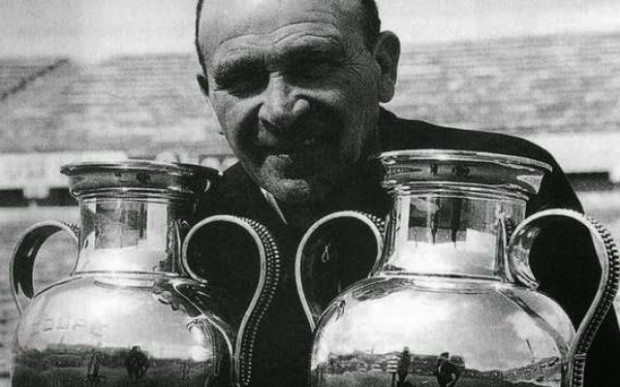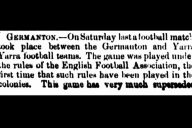Most people probably haven’t noticed, but something’s been missing from the second round stage of these World Cup finals.
Those of us who grew up watching the World Cup tournaments of the ’80s and ’90s will fondly recall names like Zbigniew Boniek, Igor Belanov, Gheorghe Hagi and Hristo Stoichkov bringing their craft and flair to football’s biggest stage.
Going back even further, before the great Bulgarian team of Stoichkov, Letchkov and Kostadinov which made the semi-finals at the ’94 World Cup, even before the Poland sides that finished third at the ’82 and ’74 World Cups, there was the Lev Yashin-inspired Soviet Union (now Russia) side which made the ’66 tournament’s semi-finals.
Then there was the Czechoslovakia team — led by the 1962 European Player of the Year, Josef Masopust — which made the ’62 final in Chile, only to be denied by Brazil. The Czechoslovakians had played another Eastern European powerhouse, Yugoslavia, in the semi-final. The Soviet Union and Hungary were also in the quarter-finals of that World Cup.
And of course in 1954 the team that many still regard as possibly the greatest (or at least the equal of Holland ’74) never to have won the World Cup — the Magical Magyars of Puskás, Hidegkuti, Kocsis, et al.
Fast forward to 1998 and we had the giant-killing performance of the newly independent Croatia, carving up Germany 3-0 in the quarter-final before running out of steam against the host and eventual winners France in the semi-final.
This is only a smattering of Eastern Europe’s rich contribution to World Cup history. We could go all the way back to the tournaments played in the 1930s too.
So coming into the second round of this World Cup the hopes and aspirations of this great swathe of the football world — all the way from the Baltics to the Balkans — were carried by the coach of Algeria, the Bosnian Vahid Halilhodžić, and a clutch of Swiss players — Valon Behrami, Blerim Džemaili and Xherdan Shaqiri among them — who had been born in the states of the former Yugoslavia or to parents from there.
Not one team from this region made the last 16: not the perpetually disappointing Russia, not the plucky debutants Bosnia and Herzegovina, and not even the never-give-up Croatia.
At least at the last World Cup Slovakia had the good grace to sneak into the last 16 and in 2006 Ukraine had stumbled unconvincingly into the quarter-finals before being summarily despatched by eventual winners Italy.
The 2002 World Cup was the last time that none of the Eastern European contingent made it to the last 16. In fact, it is only at this World Cup and the 2002 edition that there have been no Eastern European representatives in the second round stage.
You could stretch definitions and argue for the inclusion of semi-finalists Turkey as an Eastern European team, but we all know despite the cultural sway of the Ottomans on a good chunk of south-eastern Europe that the Turks don’t belong in this particular club.
As a general rule of thumb, the operating definition of Eastern Europe is that it includes all those who once lived behind the Iron Curtain of communism and the Balkan conglomeration marshalled for so long by Marshal Josip Broz Tito. It’s a pretty disparate bunch of cultures, most of which have some seething hatred for one, two or more of their neighbours, but it’s a good enough lump of land and shared experience to work for broad taxonomy’s sake.
It was a good enough definition for football writer Jonathan Wilson to use when penning his excellent survey of the bloc’s football history, Behind the Curtain: Travels in Eastern European Football.
Yes, the former Habsburg bunch will argue to dear death they’re not Eastern at all, that they are in fact Mitteleuropa. The Romanians might even tell you they’re closer to being a Latin culture than anything else. And the Poles will probably look nervously east to Russia and then just as nervously west to Germany and be thankful they still have a nation to call their own.
However, there are still plenty of quality players coming out of these countries. The conveyor belt of technicians from the Balkans is well-evidenced by their ubiquity in the Bundesliga, Serie A and La Liga: Croatia’s Ivan Rakitic has just signed for Barcelona; Serbian players such as Branislav Ivanovic, Matija Nastasić and Neven Subotić ply their trade at big clubs; as do Montenegrins like Mirko Vučinić (at least until his take-the-money-and-run transfer to UAE club Al-Jazira) and Stevan Jovetić.
Poland’s Robert Lewandowski will make his move from Borussia Dortmund to Bayern this season; and even the long-time basket case that is now Hungarian football has players like Balázs Dzsudzsák at Dynamo Moscow and Ádám Szalai at Hoffenheim.
Incidentally, the Hungarians, who have not qualified for a World Cup since 1986, have started to make some inroads at youth international level and have set up schools like the Puskás Academy in an attempt to revive and restructure their moribund talent development regime.
Eastern European players, somewhat like South Americans, have historically been a hit or miss proposition in the more rough and tumble of English club football.
Of course there have been plenty of notable exceptions, with two of them finding homes at Manchester City: Bosnian star Edin Džeko might not always be thoroughly convincing for the Sky Blues but has managed to make a decent contribution in his couple of seasons there; and going back to the late ’70s, City had the excellent Polish playmaker Kazimierz Deyna on their books for three seasons.
It’s probably the case too that the more cosmopolitan style of English club football these days means it’s easier for players like Luka Modrić to successfully transition from the more ‘technical’ central/eastern style of play to the faster pace of English football.
It’s hard to say why exactly Eastern Europe didn’t have a representative in the last 16 at this World Cup other than to cite the obvious fact that none of them were good enough. With a little more luck, both Bosnia & Herzegovina and Croatia could have made a run for the quarter-finals, but Russia was for the most part pretty dire. Valid arguments could also be made that Eastern Europe’s relative decline in the past decade has a lot to do with the plug being pulled on the socialist state-funded training and development for youth football finally taking its toll, as well as the financial inequality between Eastern and Western European club football.
Fabio Capello has his work cut out for him if he’s to whip something together for 2018 when Russia will host the tournament. No doubt he’ll get some encouragement from Vladimir Putin. But it’s a shame that a country that produced some of the most influential coaches/strategists of modern, postwar football has resorted to foreign coaches to revive its fortunes.
Where is Russia’s (or Ukraine’s) Valeriy Lobanovskyi, Eduard Malofeev (I had the privilege as an impressionable 11-year-old of seeing Malofeev’s Dinamo Minsk in 1983 batter Hungary’s Gyor ETO 6-3) or Viktor Maslov, who Wilson describes as perhaps the “father of modern football” and the first coach to really systematise the idea of pressing:
“The game’s evolution, of course, is not linear, and there are others who have had significant roles to play, but if there is a single man who can claim to be the father of modern football, it is Viktor Maslov.”
The way the game is played today owes much to the contribution of Eastern European coaches like Béla Guttmann, Gusztáv Sebes, Tomislav Ivić and Zdeněk Zeman, to name just a few.
Hopefully, if not Russia, then one of the other great football nations of Eastern Europe will rise up again to showcase the wonderful football traditions of the region in 2018. It would be nice to think the Czechs might have another Antonín Panenka up their sleeves, or the Romanians have a budding Gheorghe Hagi — a Messi of the Carpathians — within their ranks.

















Romanians ARE a Latin people, that’s not a “claim”. 🙂 The language is one of the main Romance languages, the modern Romanian culture was based (in mid-19th century) on French culture, and in terms of temperament the reference is the Italian temperament but with Orthodox religious nuances, which makes them similar to the more exuberant Latin American Catholics (as opposed to the more sobre French or Spanish Catholics).
BTW there is indeed a budding Hagi in the Romanian ranks, i the shape of Ianis Hagi! 🙂 He looks as if he can be as good as his dad. Shame, though, that any trace of an actual football development set-up has been thrown out the window and they’re relying now on Golden Generation footballers to make children. :))